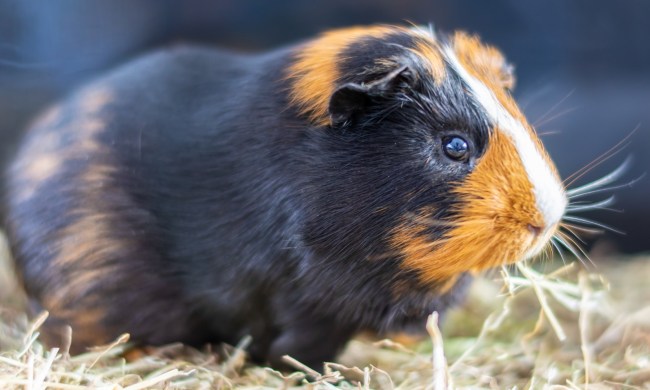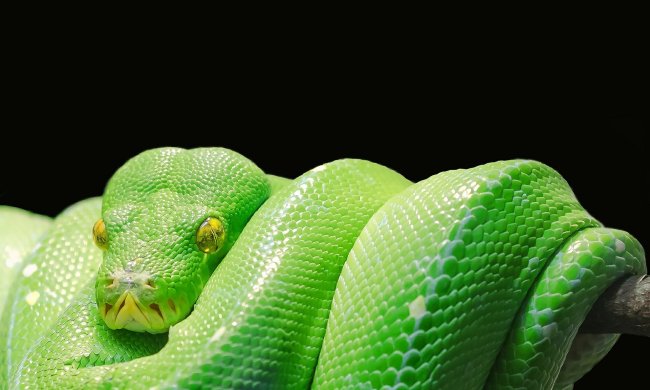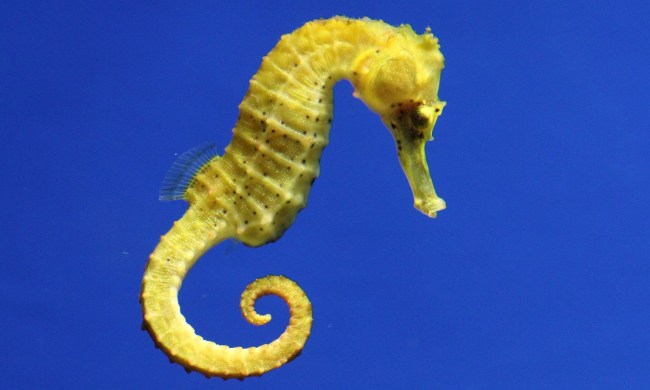Here be dragons! Well, over there … in Indonesia on an undersized island. Actually, these giant lizards, which are members of the monitor lizard family, live on four islands in that region. Still, they’re named after only one of them — Komodo. (The other islands are Giili Motang, Flores, and Rinca.) Experts believe that these giant lizards’ ancestors walked the earth around 40–60 million years ago.
Of course, Komodo dragons are not the true dragons of fairy tales and myth. No flying, no breathing fire. But they are the largest lizard on earth. They may weigh up to 400 pounds and can grow to 10 feet long. The Komodo dragon’s teeth are like razors, and this hefty carnivore can eat almost its entire body weight (up to 80%) in a single meal. Plus, their bite injects a deadly venom.
In this article, we’ll tell you how long you can expect your Komodo dragon to live. We’ll also cover its life cycle and pretty much everything you need to know about this endangered lizard species!
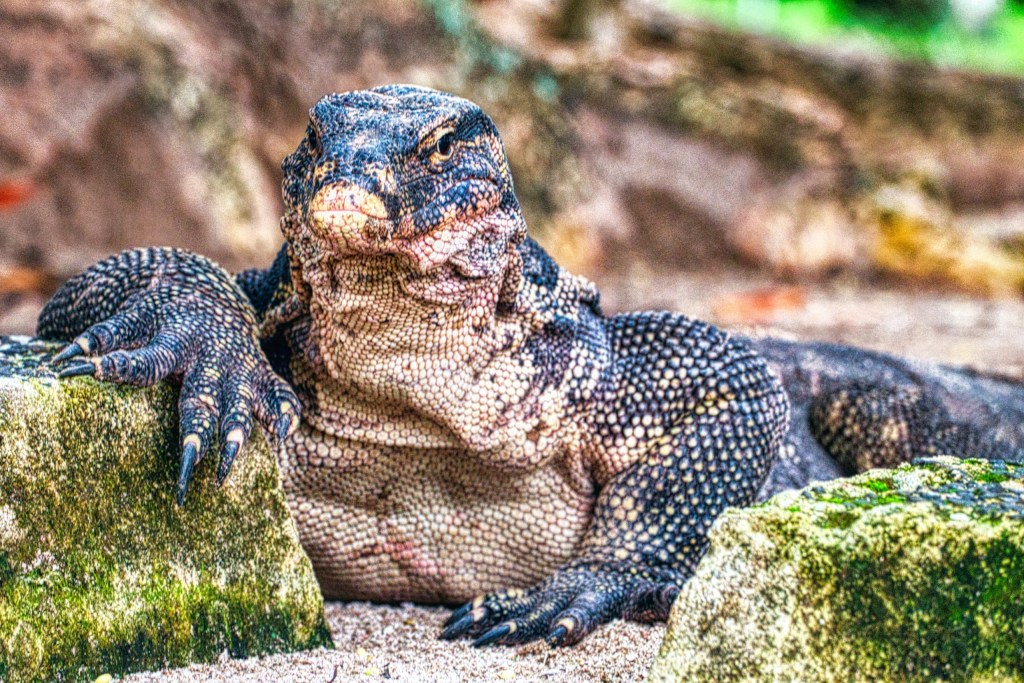
You can’t legally own a Komodo dragon
Prank mode off: You can’t actually own a Komodo dragon, at least not legally. They’re an internationally protected, endangered species. The only people (or places) that can keep them are individual educational institutions and zoos. Although it might seem cool to own one, you’ll soon see why this would be problematic.
The Komodo dragon life cycle
Typical of a lizard life cycle, the Komodo dragon female lays soft, leathery eggs. Each egg is about twice as big as a chicken’s egg. (That’s interesting, because a grown Komodo dragon is certainly more than twice the size of any chicken!)
These dragons usually lay around 20–25 eggs each year in the month of September. The eggs incubate during the wet season, which lasts for about eight to nine months. Many of the eggs never hatch, and sometimes predators, such as wild pigs or other Komodo dragons, will eat entire batches (known as clutches).
Komodo dragons are not loving parents. In the very beginning, the female may protect her nest from other female dragons. Still, she soon forgets and leaves her nest unguarded. If a clutch survives, only about 50% to 75% of the eggs laid actually hatch.
Baby Komodo dragons
Strange as it might sound, baby Komodo dragons spend most of their first year living in trees. In their early life, dragon hatchlings are camouflaged with spots and lines, which allow them to blend in with the tree branches and bark.
Living in trees protects baby Komodo dragons from their elders, which would eat them without hesitation. The trees also provide a readily available food source for the baby dragons in the form of abundant insects and smaller reptiles.
All Komodo dragons are carnivores, and they actively hunt. At one time, researchers believed that these lizards had hazardous bacteria in their mouths that caused the swift death of any animal (or person) that they bit. However, Australian researchers now think they have a venom in their saliva, similar to snake venom, that works with bacteria to deadly effect.
In any case, as the dragon grows, it begins eating larger prey, such as birds and small mammals.
By the end of its first year, a Komodo dragon grows to a length of around 3 feet. From that point on, it begins to live its life on the ground. It takes approximately five years for a dragon to grow to maturity, and at that point, they are often at least 6½ feet long.
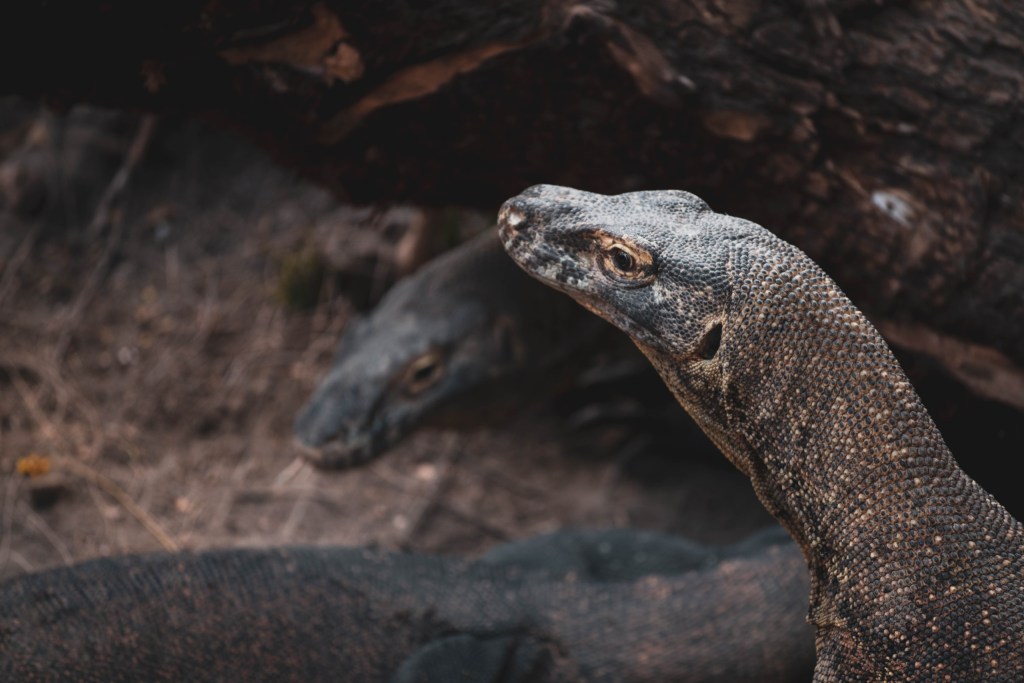
Adult Komodo dragons
As adults, these giant lizards live alone. They may gather for a feast when a large animal has died, after which they all dine together. Interestingly, experts discovered that some Komodo dragons are incredibly territorial. Those that are tend to live in a fixed area, which they protect. Those that wander continue to do so for their entire lives. In the wild, a Komodo dragon’s life span is about 30 years.
Whether territorial or a wanderer, each Komodo dragon may search for food in areas of up to 10 miles or more.
As with many species of animals, Komodo dragons establish a social hierarchy when in proximity to one another, as around kills, for instance. When this happens, younger and smaller Komodo dragons defer to older, larger dragons. What if a younger Komodo dragon doesn’t offer the deference that an older dragon feels it should? In that case, the older one may attack the younger one. This can be a serious fight, and the older dragon almost always wins. Although all Komodo dragons have tough skin, which has been likened to chain mail, an older lizard’s claws can cause vicious wounds that may lead to the younger dragon’s death.
More research is needed
Even though scientists know that these animals are endangered and much is now known about the Komodo dragon life cycle, they’ve been the subject of research only for about a hundred years. And while you can’t own a Komodo dragon, you might want to donate to help fund ongoing research and preservation of this intriguing species!
